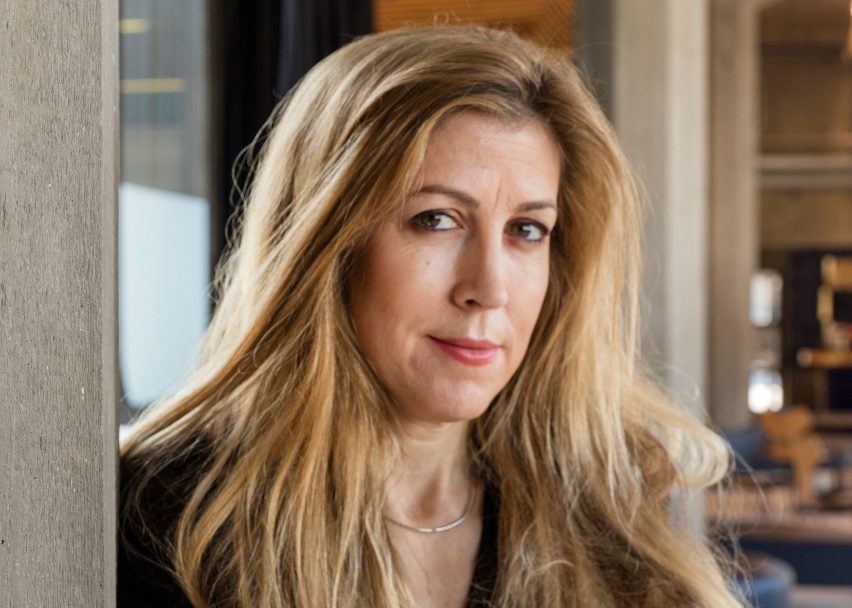The Pratt Institute has launched an archival project that pays tribute to women in architecture. Following a celebratory dinner party held in March, the school's dean of architecture Harriet Harriss explains why projects like the Mistresses Archive are vital to achieve gender parity in the profession.
The architecture world is in a state of flux. Women architects in the US still earn on average $15,000 (12,000) a year less than their male counterparts in identical roles, and only 17 per cent of principals in architecture practices are women. We have a way to go to reach gender parity in this field, but it's not without hope.
Women are gaining more recognition – Grafton Architects co-founders Yvonne Farrell and Shelley McNamara won this year's Pritzker Prize, making them the fourth and fifth female recipients in the award's 41-year history. And we're leading institutional change – a record number of female deans are now opening doors and providing new platforms for women.
Last month, to coincide with Women's History Month, Pratt Institute hosted its first "Dinner Party" to celebrate women faculty and alumna of the Pratt Institute School of Architecture. The event was inspired by Judy Chicago's feminist art installation, The Dinner Party (1979), and featured custom place settings for each guest which were designed and fabricated by a team of faculty and students.
35 per cent of women graduating from schools of architecture will have left the profession altogether in a decade
Just as Judy Chicago's original work honoured women who Chicago thought deserved a seat at the table, our Dinner Party paid tribute to the women who have made the architecture, art and design world what it is today. In a special nod to progress, the event was hosted at our president Frances Bronet's home, an architect herself and Pratt's first female president.
We've seen women's representation in the architecture field steadily improve in recent years. Over the past decade, female architecture staff has increased from 28 to 35 per cent at firms, with the number expected to continue to rise as 40 per cent of emerging architecture professionals are women.
Yet, when you move up the ranks, the percentage of women in architecture drastically decreases the higher one ascends. According to the 2018 Equity by Design survey, nearly 20 per cent of respondents reported that their firm leadership is all male, and half said it's mostly male.
Many women still feel they are under-supported in their careers and choose to leave the field before they've had a chance to make their mark. In fact, 35 per cent of women graduating from schools of architecture will have left the profession altogether in a decade.
Firms need to become more supportive of women's professional careers
In order to ensure the architecture world continues to progress and see increased diversity across all levels of professional firms, it is imperative that we see meaningful change to the persistent attitudes that shape studio culture. Firms need to become more supportive of women's professional careers – including acknowledging and celebrating the work of prominent women.
For this reason, our Dinner Party was more than just a celebration – it also marked the launch of a new archival project, a series of conversations and workshops aimed at creating a more representative, inclusive and welcoming environment in the School of Architecture and beyond.
While Judy Chicago's work portrays a symbolic history of women in civilisation, the Mistresses Archive is literally documenting and restoring leading women to their respective disciplinary canons. By building this archive, we aim to offer the professional and pedagogic resources needed to reflect the diversity of our student body, and to set new trajectories for a currently unequal architectural profession.
By recognising other forms of output, one can begin to see a much richer history of female architects
It's no secret that women have historically been underrepresented in the field of architecture, but that does not mean women have had no role to play. We must move beyond the hegemony of the "major commission" and the "monograph" – metrics that can account for why the work of female architects has historically been seen as having less value and significance than the work of their male counterparts. By recognising other forms of output, one can begin to see a much richer history of female architects.
The incredible stories of women designers, architects and leaders shouldn't just be shared each year in March during Women's History Month. It's our great hope that through the Archive and by highlighting and amplifying great work when we see it, together we can shift the conversation around gender parity in architecture.
I want our current and future students to know they will be entering a challenging profession, but one that is less gendered than when I was an architecture student, with a long road still ahead. It will take academia, professional firms and their clients to make these meaningful changes a reality for more young women in architecture. If we don't drive this change as female leaders, who will?

